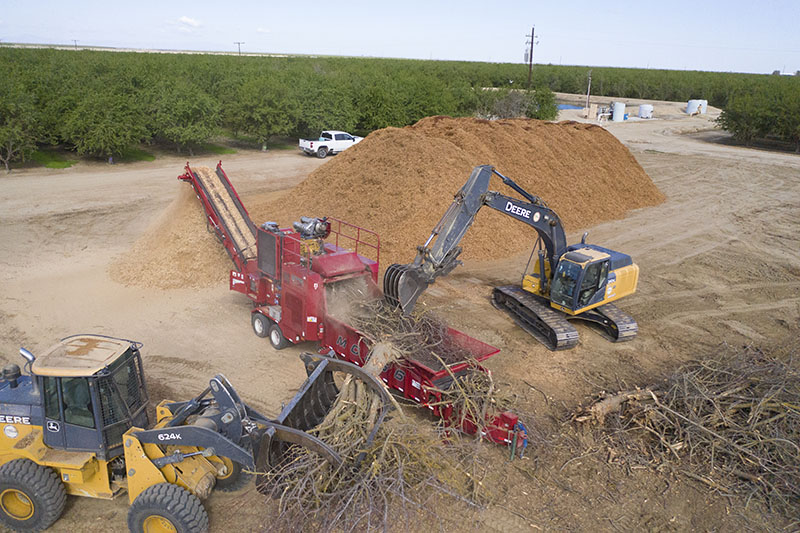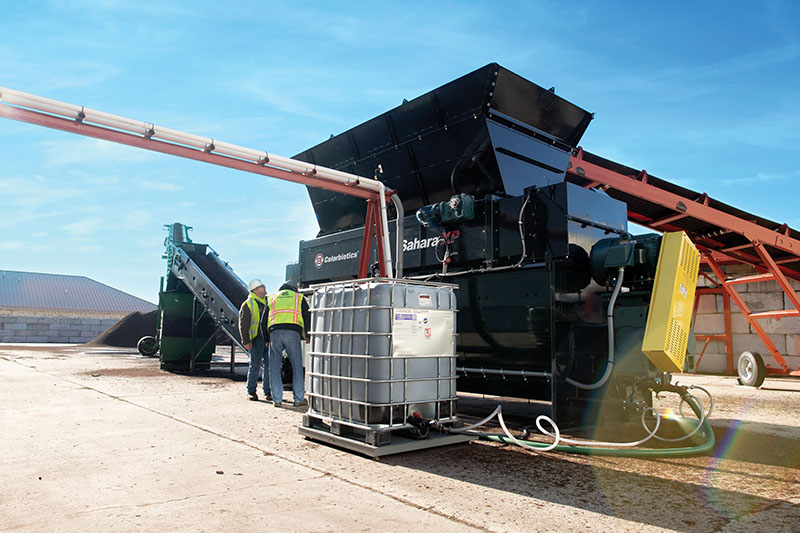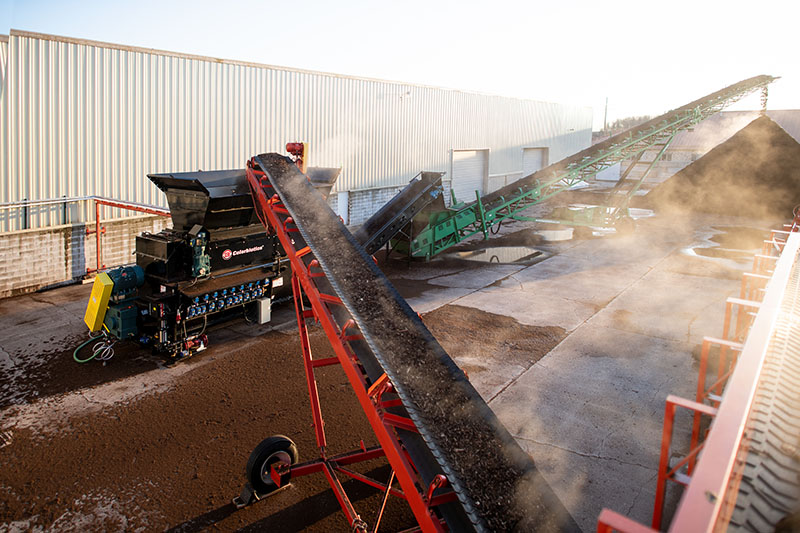Mulch: Turning Waste into Profit
Where there is business, there is waste.

Photo courtesy of Rotochopper.
In the tree care industry, waste has the potential to contribute to a cycle that can elevate a business and present new opportunities by supplying customers with tailored mulch. Chances are if your customers enlist you for help tending to their shrubbery, they also have a need for mulch to protect plants and refine their landscapes. Unlike a company that shreds unused documents, tree care companies have the option of using those “shreds” in the form of discarded wood chips to provide customers with useful material and your company with additional revenue.

Businesses considering adding a mulch service to their catalogs should first fully understand the scope of the benefits it will add to the business and ultimately, how to sell it. Perhaps one of the most important reasons to buy and distribute mulch is for its powerful water-conservation abilities. Skilled at blocking sunlight, mulch aids in keeping that moisture cool. The result is a reduction in evaporation up to 50% and a stronger foundation for vegetation to thrive and perform at its peak.
In a world of rapid climate change, mulch can also assist in extending the life of plants. Regions like the Northeast are particularly susceptible to erratic temperature shifts which can hinder the seasonal lifespan of flowers and bushes. Acting as a protective barrier, mulch can preserve soil heat when temperatures lower and keep it cool when they rise, extending the time plants flourish throughout each season.

And, of course, mulch contributes to the aesthetics of a yard by providing a more polished appearance and improving the overall curb appeal of a property. Some homeowners consider mulch as part of a physical border to their property when lining front hedges with it, as it assists in separating the sidewalk from the rest of the property. It also diminishes the growth of pesky weeds, so customers can look forward to spending less time weeding and more time enjoying their well-maintained shrubbery.
For those who want to supply existing customers with mulch and think outsourcing may be a better option, there are many reasons to pursue manufacturing instead. Though it may seem simpler and less time consuming, purchasing mulch to supply their customers can end up hurting the company financially. However, by gathering brush, stumps, branches and other discarded materials after completing a job and converting it into a new product, a business will save money in the long run as long as it invests in the right equipment.

Like any investment, venturing into mulch production requires capital. Those who may waver on significant cash expenditures or sustain a timid mindset when it comes to new equipment may be surprised by their options and access to the products that can elevate their services. Machinery is sold by experts with vast knowledge of mulch production that will put new users at ease. Shoppers can even receive in-depth training to ensure they don’t leave the supplier without knowing how to use each machine.
As Nick Korn, the West Coast regional sales manager at Rotochopper, says, “You need the right utensils to start making the recipe.” With fifteen years of experience selling chippers, he divulges the simple recipe for mulch and the “utensils” needed to produce quality results: equipment, work site and delivery trucks. A site and delivery truck are familiar facets to tree care industry personnel. A generous location allows for space to operate and store the equipment, the size of which depends on the amount of equipment. And delivery trucks bring the mulch to customers.

Quality machinery is required for mulch production. While some may find this step intimidating, sales reps offer their expertise in choosing the perfect package for specific business needs. Grinders, chippers, screens, color systems and even bagging machines are sold both separately and in packages. Working with experienced professionals will simplify the buying process, but knowing the basics before consulting the sellers will ensure landing on the right choice.

Grinders vary in size and price, allowing buyers to keep their budget proportional to their business needs, and offer the chance to customize mulch for their consumers. Grinders, both horizontal and tub, produce mulch in various sizes to fit the customers’ preferences. Phil Urban, Northeast territory manager for industrial equipment at Morbark, has observed in his sixteen years of experience that Midwesterners tend to prefer bigger mulch and Northeasterners prefer a finer mulch. Urban also expels a mulch-production myth that only tub grinders can be used. Both tub grinders and horizontal grinders can get the job done, and many companies that service every region of the country supply both.

An underrated, yet extremely important component of mulch production is the colorant. Customers often choose their mulch based on not only size but color, and each customer has a different preference. The color process is fairly simple: most colorant is a liquid concentrate that purchasers then dilute with water. While colorants can be added to standard grinders, experts like Kent Rotert, vice president at Colorbiotics, recommend using equipment designed specifically for coloring to maximize retention and aggressive mixing. Prepare to spend $2.75-$4.00 per yard. Each price range is proportional to both quality and longevity of the color.
The final and most important component for mulch production is the material fed into the machines, and, fortunately, tree care companies already have it. Tree branches, chips, brush and even stumps are used to create mulch. Lars Bergan, Great Lakes West regional sales manager at Rotochopper, emphasizes that promoting such waste into mulch further upholds the natural cycle of carbon decay as the carbon is compressed and used to create a new useful material.

So, how much should new mulch producers plan to spend on their first equipment package? Pricing depends heavily on many factors such as customer base, demand, average yard size and more. Be sure to discuss those factors with sales reps and they will undoubtedly help you choose the best product to serve your needs. Quality multipurpose equipment for beginners can range from $190,000 to $800,000, with smaller businesses servicing smaller yards on the low end and larger customer bases with more land to service on the higher end. Again, consulting with the experts prior to budgeting will help to create accurate budgets.
The money spent on equipment is returned immediately. Not only will businesses save money on purchasing the product, but they also save on disposal costs.

Though pricing may vary, most experts agree that beginners should expect to give themselves six months to a year to get their mulch service up and running. That will give businesses plenty of time to secure the right sites and equipment.
With enough research, consultations and budgeting, tree care companies can benefit from adding mulch production to their services and allowing their businesses and the environment they work to maintain to grow to their fullest potentials. Those who take the first step will quickly find themselves wondering why they didn’t do it sooner.
About the Author
Molly Trust is a Trust and Estates specialist with a bachelor’s degree in Creative Writing from Wheaton College. She has been published in Billboard, The Patriot Ledger and South Shore Magazine. Molly currently resides in Boston, MA with her dog Leopold.

